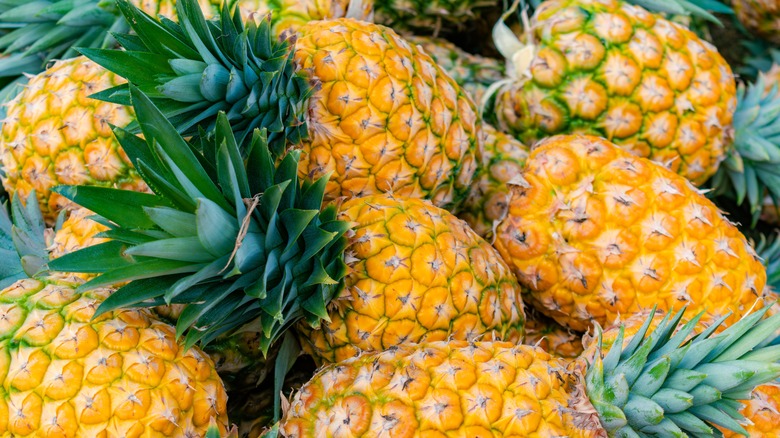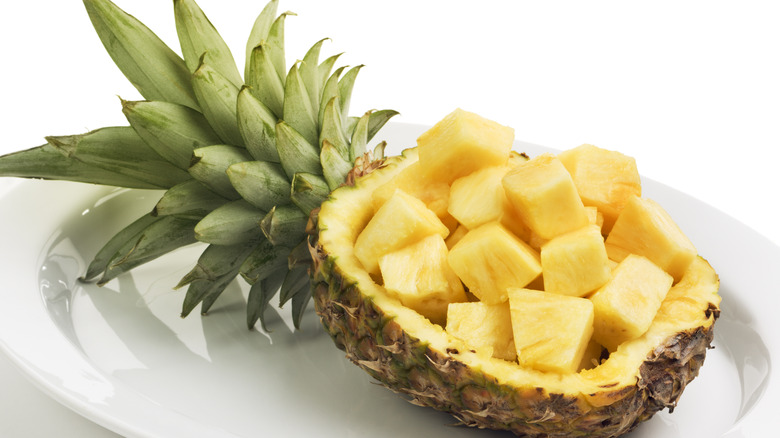The Storage Trick That Makes Pineapple Effortlessly Sweeter
We may receive a commission on purchases made from links.
Before sharing this latest cooking hack, I'll start with a disclaimer: This isn't something I'd ever do myself, because the thing I love best about fresh pineapple is its tanginess. I deliberately buy and eat underripe pineapples since I find soft, sweet fruit to be nothing but disappointment. Still, I can acknowledge that some of my opinions are unpopular (I also think milk doesn't belong anywhere near cereal), so I don't mind sharing how to de-tang a pineapple. According to a book called Dessert and Booze Hacks, the secret to sweeter pineapple lies in turning it upside-down.
Speaking of upside-down pineapples, have you tried our pineapple upside-down cocktail recipe? But I digress. We were talking about the pineapple sweetening hack, which involves a little more than fruit flipping. First, you cut off the crown. (You can also twist it off if you're game to try the pull-apart method of knife-free pineapple opening.) Once the fruit is de-crowned, put it on a plate, bald spot down, and cover it with foil or plastic wrap. After two to three days in the fridge, the sweeter juices that collect on the bottom of the pineapple should have spread throughout the fruit, making the top slices taste more sugary than they ordinarily would.
It should be noted that not everyone agrees that this hack works; a William Goldfield, a representative from Dole Pineapple, told EatingWell that "The real reason for the vertical discrepancy in sweetness is that pineapples are a 'composite' fruit. This means that each starts as an individual fruitlet with its own flower, and the fruitlets on the bottom of the pineapple are older, more mature and thus sweeter than those on the top of the pineapple." Per Goldfield, the orientation you store your pineapple in won't make difference.
A few other tricks for a sweeter pineapple
If you don't have the patience to wait a few days (or find the upside-down hack doesn't work for you) but still want sweeter pineapple, you do have a few other options. One is to bake the pineapple at low heat (around 225 degrees Fahrenheit) for 20 minutes, then let it cool for at least three hours before cutting it. While this hack won't exactly ripen the pineapple — these fruits don't really ripen much after they're picked — heat does tend to make fruit taste sweeter.
Another way to play up a pineapple's sweeter side involves sprinkling it with a seemingly contradictory substance — not sugar (although that would also do the trick in a more overt way), but salt. A very light coating of salt helps to intensify the fruit's natural sweetness, although it does add a third dimension to the sweet and tangy flavor profile that pineapple's already got going on. If you'd rather not taste quite so much salt, you can instead soak the pineapple in salt water (about a teaspoon of salt per cup of liquid) for a minute or so. This briny bath will also help to neutralize the bromelain, which is the substance that makes your mouth all tingly when you bite into fresh pineapple.

